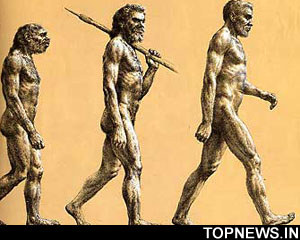Early man "genetically modified" wild horses to make them tame
 Hamburg - Early man "genetically modified" wild horses to create tamer animals which became the domesticated horse which helped spread human civilisation around the globe, according to new findings by a team of German scientists.
Hamburg - Early man "genetically modified" wild horses to create tamer animals which became the domesticated horse which helped spread human civilisation around the globe, according to new findings by a team of German scientists.
Until now, it was not known whether horses had always been "user-friendly" or whether humans had interceded in their genetic makeup through selective breeding - as early humans demonstrably did with wolves and wildcats to "create" modern dogs and cats.
Now, using genetic studies of horse-hair coat colouring mutations, the German researchers have been able to state unequivocally that Stone Age humans apparently captured wild horses and then selectively bred them to bring out the qualities of intelligence, gentleness and obedience which made man-and-horse an unbeatable pair throughout later recorded human history up until the 20th century when mechanisation replaced the horse.
The findings, published in the scientific journal Science, came from years of DNA analysis by German researchers from the Leibniz Institute for Zoo and Wildlife Research, Berlin, the German Archaeological Institute, the Humboldt University Berlin and the Max Planck Institute of Evolutionary Anthropology, Leipzig.
The DNA studies confirmed that wild horses were domesticated 5,000 years ago in the Ponto-Caspian steppe region of what is today Russia, Kazakhstan, Ukraine and Romania. This Caucasus region has been called the "Nursery of Mankind."
Humans left Africa some 40,000 years ago and settled in the Fertile Crescent of the Tigris and Euphrates, which is the "Cradle of Mankind". After the snows of the last Ice Age began to recede, humans spread north into the Caucasus.
From there, geneticists believe, humans spread in all directions - populating Europe and Asia and even crossing the Siberian land bridge to the Americas, as well as a possible land bridge to Australia.
It was in the Caucasus that humans found wild horses running free in vast herds. And it was here that the "genetic modification" of horses began, otherwise known as "selective breeding," according to the new findings.
The findings are based on ancient DNA spanning the time between the Late Pleistocene and the Middle Ages, targeting nuclear genes responsible for coat colourations.
Analysis of those genetic changes allows scientists to pinpoint the time and place of horse domestication.
The study also demonstrates how rapidly the number of colourations increased as one result of the domestication. Within a relatively few generations, humans had culled out the wildest animals and had effectively "genetically created" the domesticated horse which would carry him through the pages of history.
The findings also show very clearly that the huge variability of coloration in domestic horses which can be observed today is a result of selective breeding by ancient herders and farmers.
A key finding is that the genetic change in horses coincided precisely with the transition in human society from roving bands of hunters and gatherers to settled communities of farmers and herders.
Thus, the domestication of the horse went hand-in-hand with the creation of cities, trade and commerce - with horses providing the cutting-edge means of human advancement. (dpa)